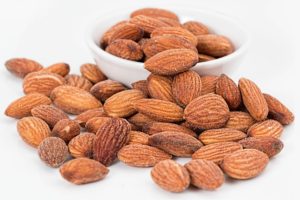
This is an eating plan that is low carbohydrate approach to eating. The premise and evidence behind this plan is to remove the majority of carbohydrates to have the body use ketones as fuel. Ketones are formed from the burning of fat in the liver. Lower amounts of carbohydrates consumed also lower the levels of insulin. The research has shown in some people that insulin resistance and levels drop greatly. Over 20 studies have shown effective weight loss initially and some have demonstrated long term weight loss. In many studies people report improved focus and concentration and decreased hunger. Additionally, lowered triglycerides and elevated HDL levels are demonstrated.

The eating plan can range from less than 20 grams a day of net carbohydrates up to 50 grams for some people, but the majority of the plans are below 30 grams per day. Fiber is unlimited, The goal is to be in ketosis to allow the body to burn fat as a fuel. Examples of items that are avoided in this eating plan are bread, pasta, rice and potatoes. Fruits are not off limits, but very restricted as are some vegetables. These are also moderate protein approximately 1 gm/kg/day while the rest of the eating is made up of fat. The body is using fat for fuel, but you want the fats to be healthy; look primarily for fats that are unsaturated like polyunsaturated and monounsaturated, eat sparingly saturated and trans fats. For great pictures and reliable information on foods to eat on this eating plan see: https://www.dietdoctor.com/low-carb/keto/visual-guides. For more information on fats: https://www.health.harvard.edu/staying-healthy/the-truth-about-fats-bad-and-good

Ways to reach ketosis include restricting net carbohydrates to a level that allows for ketosis to occur. Net carbohydrates equals the grams of carbohydrates subtracting grams of fiber. Fiber is often very beneficial. Moderate protein and primarily healthy fats. Snacks should only be eaten if hungry. Any activity can improve levels of ketosis.

Measuring or recognizing ketosis can be done in several ways. The first is just to recognize the symptoms: dry mouth, increased thirst, increased urination, reduced hunger, and “keto breath”. Keto breath is a fruity smell to the breath. Three other simple ways to measure this is through urine strips and blood measurement. Urine strips can be found at most drug stores. Measuring the ketones in the first urine of the morning showing moderate to large ketones. Blood monitors, similar to glucometers can be used with optimal levels between 1.5 – 3.0 mmol/L. Finally, is a breath ketone analyzer, but the blood meter and breath analyzer can be found from many online stores.

There are some people who should not use this eating plan including people on insulin, women thinking of becoming pregnant or those who are pregnant or breastfeeding. And anyone on medication for a chronic disease should check with their healthcare provider prior to starting this plan.
There are also some side effects of ketosis for people. Knowing that the average American eats 300 grams of carbohydrates a day lowering to less than 30 a day may cause symptoms that are often called “keto flu” such as headache, fatigue, dizziness, nausea, muscle cramps, and irritability. To overcome this, carbohydrates can be lowered over several days instead of drinking lots of water and increasing salt intake the first few days. Also, during the first few days it is wise to not exercise. Beyond the first few days are constipation, reduced physical performance if exercising a lot, and slightly increased heart rate and for occasionally feel heart beating harder. For more information: https://www.dietdoctor.com/low-carb/keto/flu-side-effects
References: multiple sources – primary source dietdoctor.com
Pictures all from pixabay.com